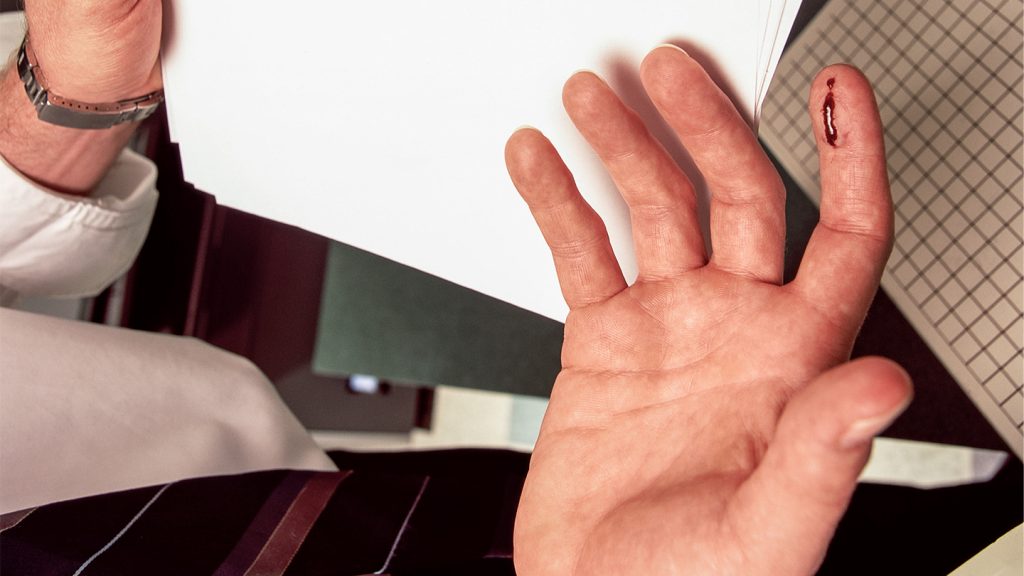The physics behind paper cuts has been explained in a recent study, which found that the thickness of paper can determine its propensity to cause cuts. Thin sheets of paper tend to buckle before cutting, while thicker paper does not concentrate force enough to pierce material. Dot matrix printer paper was found to be the most dangerous, followed by magazine paper. The angle at which the paper is pressed onto the material also affects the likelihood of causing a cut.
Researchers have created a 3-D printed tool called the Papermachete, designed to act as a single-use knife with a strip of printer paper as the blade. This tool can cut through various materials like cucumbers, peppers, apples, and even chicken. Future studies will involve testing more realistic finger-shaped materials rather than flat sheets of gelatin. The research aims to better understand the mechanics of paper cuts to potentially create safer alternatives for everyday cutting needs.
The study was conducted by physicist Kaare Jensen and colleagues at the Technical University of Denmark in Kongens Lyngby. The researchers plan to further explore the properties and behaviors of different types of paper to develop a deeper understanding of how paper cuts occur. The development of the Papermachete tool showcases the potential applications of this research in creating low-cost and efficient cutting tools for various purposes.
The findings of the study shed light on the physics of paper cuts and provide insights into the factors that contribute to the likelihood of experiencing a paper cut. Understanding the mechanics behind paper cuts can lead to the development of safer and more effective cutting tools. The research opens up avenues for further exploration into the properties of paper and materials, as well as potential applications in everyday situations where cutting is required.
The study highlights the importance of scientific research in uncovering the underlying principles of common phenomena like paper cuts. By delving into the physics behind paper cuts, researchers can develop innovative solutions and tools to enhance safety and efficiency in cutting tasks. The creation of the Papermachete tool demonstrates the practical applications of scientific discoveries in everyday life and showcases the potential for future advancements in cutting technology.
Support for science journalism and research is crucial in advancing our understanding of the world around us. By investing in scientific literacy and education, we can make informed decisions and contribute to the development of new technologies and solutions. Subscribing to science publications and supporting organizations like Science News and the Society for Science helps to strengthen scientific literacy and ensure that important societal decisions are grounded in science and evidence. Your support can make a difference in shaping a more scientifically informed society.


